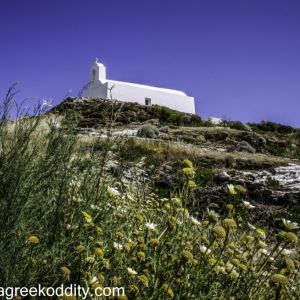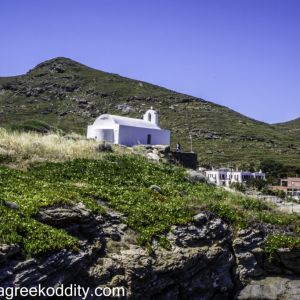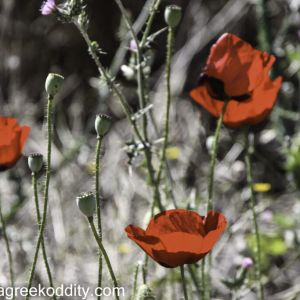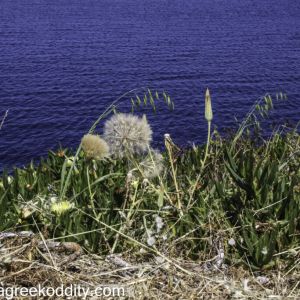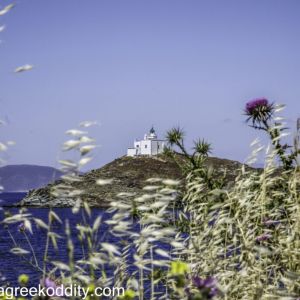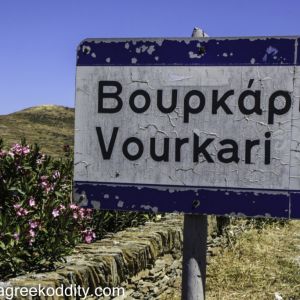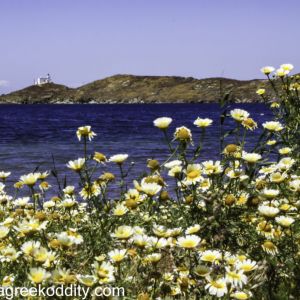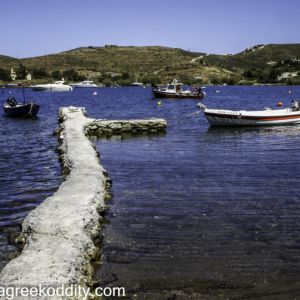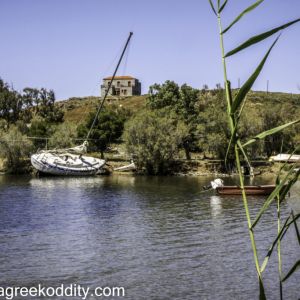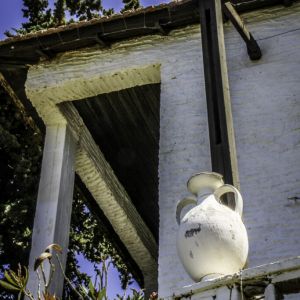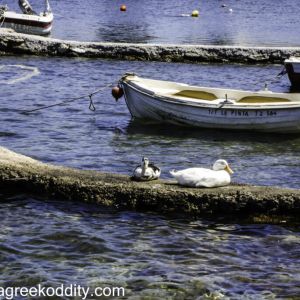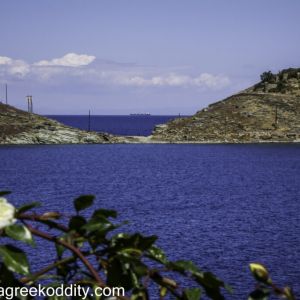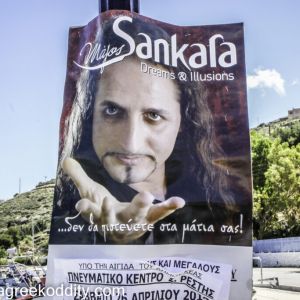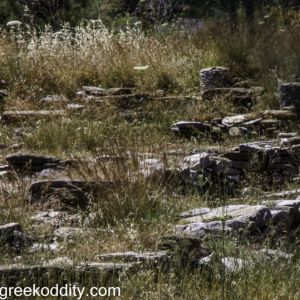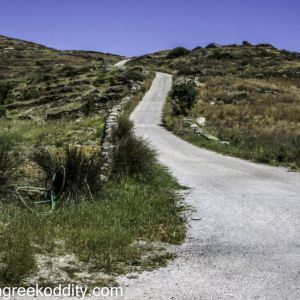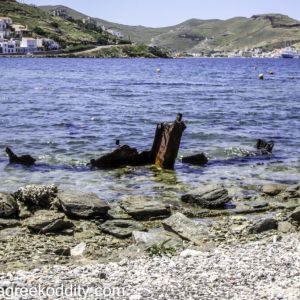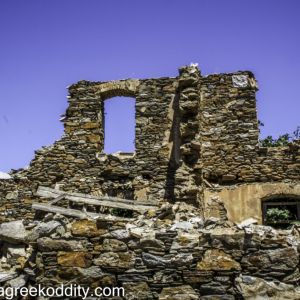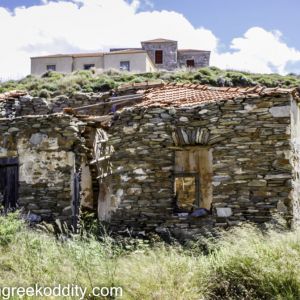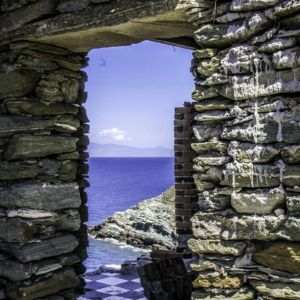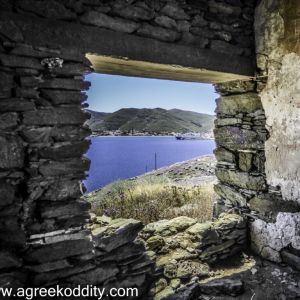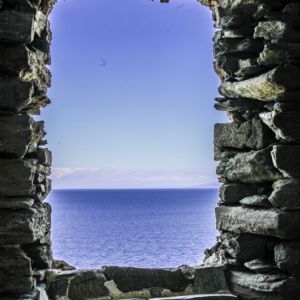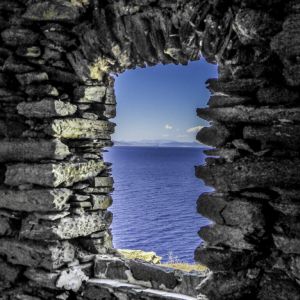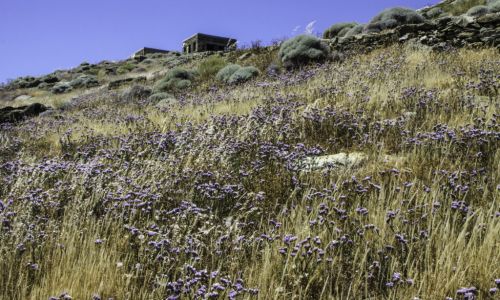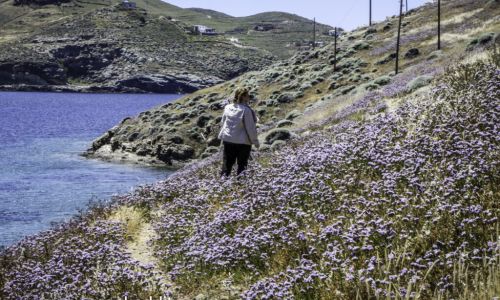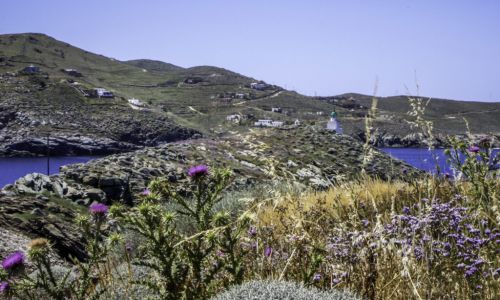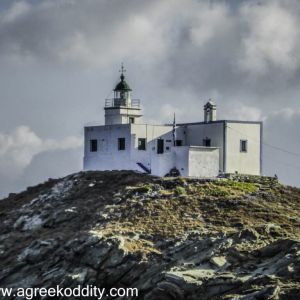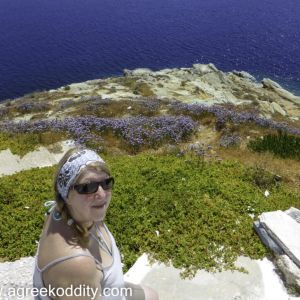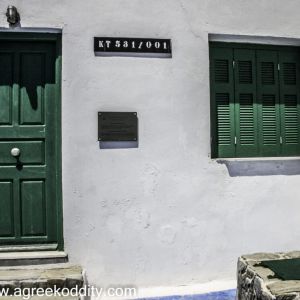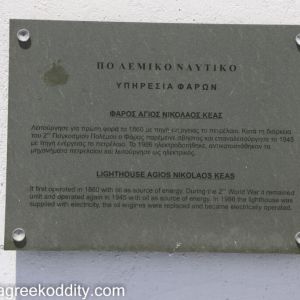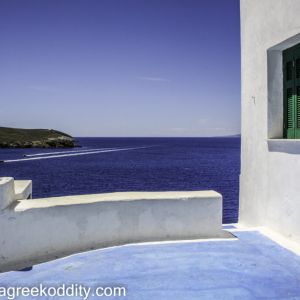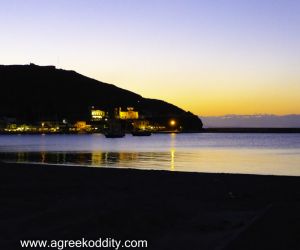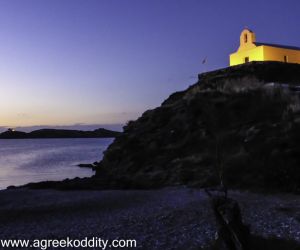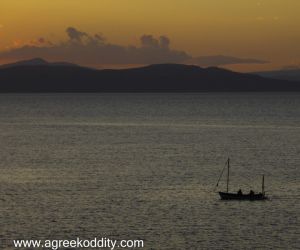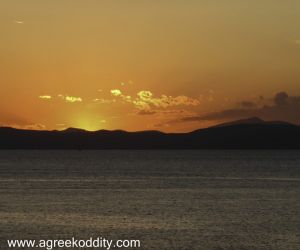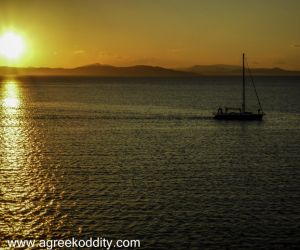Kea – a Walk out to Agios Nikolaos Lighthouse and a Beautiful Sunset
What a fabulous day! The sun is glorious and there is a slight breeze – great walking weather and what better way to discover the area.
We are now able to appreciate the pretty garden of the United Europe – obviously tended to with great care by its owners.
We walk to the port and then decide to follow the road around to the lighthouse at Agios Nikolaos. We pass Agios Giorgios, a small chapel perched on a rock overlooking the harbour. We can see the Marmari Express is in port, already shuttling between Lavrio and Kea and Kythnos. When you follow the coastline around we see our destination – the church of Agios Nikolaos perched at the end of the peninsula.
The one thing that stands out is the most amazing display of spring flowers at every turn.
The coastline meanders in and out along the edges the deep bay. The first place we come across is the little village of Vourkari.
Just beyond the village we stumble across an archaeological site which is fenced off. We later find out is the prehistorical site of Agia Irini. See a bit of history from Matt Barrett’s Travel Guides http://www.greektravel.com/greekislands/kea/history.html
Continuing the coastal path around the bay we walk past what looks like a former landing quay for ships and the remains of a settlement. A sign close by gives a clue. The sign indicates that the Mixalinos Coal Emporium Company was operating there between 1895 and 1940. It makes sense that this was a harbour for coal carrying ships. Closeby we also pass a plaque commemorating the efforts of national hero Lambros Katsonis.
An excerpt from www.keatours.gr provides a bit more information
“Moving to the narrow peninsula further down, one finds, now deserted, Kokka.
This was once an industrial area, one of the most important refuelling stations for coal- powered ships in Greece and a strong source of income for the island.
Today the coal warehouses and the workers’ houses, built at the end of the 19th century, as well as the central supply pier, lie deserted, left to the ravages of time.
The road past Kokka leads to a narrow strip of land between the open sea and the gulf of Agios Nikolaos, known as the narrow strait of Lambros Katsonis, which highlights the role played by Tzia in the pre-1821 revolutionary period. As recounted by the marble memorial sculpted by the island’s own Georgios Xionatos and positioned at this spot, the glorious seafarer Lambros Katsonis, serving in the Russian Navy during the Russo-Turkish War (1787-1792), used the port of Kea as his base.
After a bloody battle with a division of the Turkish fleet in 1789, he was cut-off in the port, but managed to escape during the night to the open sea by carrying his ship over the narrow strait of Kokka with the help of the local inhabitants. For their dedication to Katsonis’ cause, the inhabitants of Kea suffered slaughter and destruction at
the hands of the Turks, while the Bishop of the island was hanged because he had officiated over Katsonis’ marriage to Maroulio, daughter of a local noble, Petros Sophianos.
Katsonis and Maroulio had three sons, the first of whom was murdered in Kea by the Turks.
From the narrow strait of Lambros Katsonis the path leads to the lighthouse of Agios Nikolaos, which greets and bids farewell to the boats in the bay, as well as navigating passing ships. Built on the ruins of the sacred temple of Poseidon by the French Lighthouse Company (height of tower is 8m and height of focal plane is 32m),
it was the first lighthouse built in the Cyclades, in 1831, and the second in Greece.
We also find out later through a discussion on Matt Barrett’s Greece Travel Guide Facebook Group that just off the coast of Kea was the scene of a terrible tragedy which resulted in the sinking of Titanic’s sister ship the Britannic.”
As we begin our approach to the peninsula and the lighthouse we detour to a stone building on top of the hill that offers fabulous views of the coastline, inland and out out to sea.
We walk back down the slope to take the lower path around to the lighthouse. The hillside is absolutely covered with pretty lilac coloured flowers. There is a lady picking a bunch of these flowers and we open a conversation by agreeing how beautiful the flowers are. She tells us that the flower is called Statice or Sea lavender and is used in dried flower displays in the home in Greece We stay and talk a little and find out that she is a teacher and had lived in England for a while.
Limonium sinuatum, commonly known as Statice, Sea Lavender, Notch Leaf Marsh Rosemary, Sea Pink, Wavy Leaf Sea Lavender,[1][2] is a Mediterranean plant species in the family Plumbaginaceae known for its papery flowers that can be used in dried arrangements.
It is a short-lived perennial plant, and is often treated as an annual. The leaves are pinnate, lobed, and lance-shaped – up to 10 cm long (3.9 inches). All parts are downy. The winged flower stems appear in summer, and are about 70 cm tall (27.5 inches). The flowers present in short, papery clusters in colours ranging from white to pink, purple, and yellow. It has been known to become invasive.[3]
The lighthouse is a few minutes walk around and up the peninsula. The area is deserted and we are the only people there. We sit and rest on the lighthouse wall and admire the beautiful view. The breeze is just perfect.
The walk back to Korissia gives the opportunity to take photographs of more flowers and we also spot a bench overlooking the deep St Nikolaos Bay which I had read is a great spot to watch the sunset. This vantage point gives you one of the best views of the bay. We’ll be back there later!

Once back at Korissia we have a nice treat.
The sunset on Kea exceeds our expectations!
We had originally planned to stay only for 2 nights on Kea but felt that we hadn’t even touched the island. Although we appeared to be the only people staying at the United Europe we went to speak to George to let him know that we would like to stay another night. George invited us into his home and introduced us to his wife Birgitte. George was insistent that we stay and have a drink with them which of course we couldn’t refuse.
George (he uses his English name to us) tells us that he worked in England for a few years. During the conversation we told them about the beautiful purple flowers we had seen growing on the hillside and noticed that there was a display of them in a vase in their kitchen. We had taken cuttings of various plants on our visits to the Greek islands and had managed to keep them alive back in the UK. Birgitte said she had some seeds of a lovely plant that grows with many different coloured flowers and she put some in a tissue for me.
We told George that we wanted to go and see the Kea Lion and asked if any buses were running. It seems that at this time of year the bus doesn’t run very frequently but George told us that there will be a bus when a ferry arrives in port. So we have a plan of action for tomorrow!


